Softbaits can be broken down into two categories:
1. Top Water: Top water softbaits are typically eel tail softbaits rigged with unweighted or lightly weighted Swimbait hooks and soft circle Hooks.
2. Sub Surface: Sub Surface softbaits are typically rigged on jig heads or have the weights and hooks molded into the lure.
Top Water: Unweighted and Lightly Weighted Softbaits
Eel Tails
In my opinion, unweighted eel tail style softbaits have the sexiest action of all lures on the market, making them worth the effort and extra time spent rigging, as well as learning to deal with the challenges of casting them into the wind. Due to their long slender nature, eel tails are the best suited for top water lightly weighted style fishing.
Unweighted and lightly weighted softbaits will respond to any movement imparted by the angler, even the subtlest of twitches. A lightly weighted softbait will even have movement on its own drifting in current.
The long, flexible nature of soft plastic paired with light rigging makes this rig difficult to cast in the wind and achieve great distances.
Hogy Options
Hogy Original Series: At Hogy, we specifically designed this series for use with our weighted and unweighted Swimbait hooks. The Hogy Original has a hook slot on the belly to accommodate a faster more secure hook up. The plastic has a special blend for maximum flexibility while still maintaining toughness.
Hogy Swimbait Hooks: We use the strongest and the sharpest hooks on the market. Hogy Swimbait hooks are available weighted and unweighted and sizes correlate to the length of the soft bait.
Three Retrieves
1. Twitch Pause "Walk the Dog": The “Walk the Dog” style retrieve is your go to method for just about any situation you would fish an unweighted or lightly weighted softbait on a Swimbait hook. You can keep your retrieve steady or you can impart a series of pauses. This is a great retrieve technique at just about all retrieve speeds.
Rod Position: Tip pointed toward the water
Steps:
a). Cast out, collect your line before retrieve
b). point tip of rod toward the water
c). Impart a short, twitching motion, medium reel retrieve speed
2. Slow and Low: Slow and low is a good retrieve for structure in relatively shallow water where you may what to focus on all levels of the water column, including in or around the structure at hand.
Rod Position: Tip pointed toward the water
Steps:
a). Cast out, let the bait sink for any amount of time
b). Start with a couple short cranks and impart a few twitches
c). Pause and let the bait sink again
d). Repeat
3. Tip-In and Burn "Fast and Furious": This is a great technique to draw a reaction strike. The bait will be ripping through the water just below the surface with the occasional surface break. This is a useful technique when there are fish visible in the area that are not committing to a strike.
Rod Position: Tip in the water
Steps:
a). Cast up-tide
b). Collect your line so you have control and feel
c). Reel at a high speed, either maintaining it to the end of the retrieve or occasionally stopped for a brief moment before beginning again
d). A pick up will be a subtle tap, be ready to set the hook. A striper will spit the bait out as fast as it inhales it
4. Hybrid Cast: This is a cast where you switch between the 3 primary softbait techniques. This is a great technique when you are blind casting in an area that you know is holding fish.
5. Hatch Dead Drift: The dead drift technique is suited for moving water in a channel or over structure. In this situation, you are going to cast up-tide and let you soft bait drift down-tide, leaving all the action to the fluidity of big soft baits drifting through the water. This is a great technique to use during a worm hatch.
Rod Position: Parallel to the water
Steps: See above steps, repeat
SUBSURFACE: WEIGHTED SOFT BAITS
Weighted softbaits are fished very similarly to bucktail jigs in that you are likely in a tip-up position and the presentation is up and down over the trajectory of the retrieve. Weighted softbaits typically fall into two categories:
- Paddle Tail: A paddle tail will sink slower and have more action on a steady retrieve.
- Eel Tail: An eel tail will sink faster, but require more rod action to make it look “alive."
Hogy Options
1. Hogy HDUV Series + Hogy Jig Heads: Hogy’s HDUV Jiggin’ tails come in paddle and eel tail versions and are designed to interface with our Premium Jig Heads. The benefit of a jig head and replaceable tail option is that you can re-rig as the soft plastic bait gets torn up; you can reuse the jig head and replace the tails as needed, making it more cost efficient in the long run. On the other hand, there is more time involved in rigging one of the Jiggin’ series baits. Our Jiggin’ Tails have a very soft fluid plastic and have the most action, but tend to be a little less durable than our “pre-molded” Pro Tail Series.
The Hogy HDUV eel tail has UV pigmentation, which reflects UV rays giving the lure greater visibility in deeper water. The smaller 7-inch versions are ideal for imitating smaller inshore sized sand eels and various inshore baitfish. The larger 9-inch version is more popular in deeper water with boat anglers and can be both cast and jigged.
Olive, bone and bubble gum are the most popular colors in this series. Jig head options range from 3/8oz to 4oz. and all Hogy Jig Head feature the strongest and the sharpest hooks on the market.
2. Hogy Pro Tails: Hogy Pro Tail Series are also offered in eel and paddle tail versions. There is no rigging involved with the Pro Tail series which is a huge time saver, especially when the fishing is hot and heavy. Hogy Pro Tails are designed to catch trophy class fish, including tuna to 250lbs on our models with 8/0 hooks and larger. The Hogy Pro Tail Series baits have UV pigmentation and are made with extremely durable plastic and will hold up to multiple stripers, but like any bait pre-rigged with an internal weight, once they are torn or otherwise damaged, they are not reuseable. Sizes range from 4.25-inches to 9-inches and in weights from 1-ounce to 5-ounces. The Hogy Pro Tail is fished exactly the same way as a traditional jig head rigged softbaits and the most popular colors are the same as the Hogy HDUV Jiggin’ Tail series: Olive, white and pink.
WEIGHTED PADDLE TAIL SOFT BAITS
1. Steady Retrieve: It’s easy to over analyze this retrieve. The beauty of a paddle tail bait is that you can simply cast and reel. The paddle will vibrate, thereby calling in fish with its rapid motion and underwater vibration. It’s easy as that, which is why they are perhaps the most popular form of soft plastic in saltwater. One mistake anglers make with these lures is to use the same retrieve speed at all times; vary your retrieve speed to “crack the code” and find which is most effective.
2. Reel - Pause: The “Reel-Pause” method is the most versatile retrieve for fishing with paddle tail softbaits. This method works both at high speeds and slow. When the lure is at “cruising” speed, the paddle’s vibration will be calling the fish in. The pause is built in to allow a little time for the predator to catch up, but not so much such that it will spook the fish. Often it’s when the lure’s speed picks back up is often when you’ll get the strike.
Rod Position: Horizontal and tip up positions
Steps:
a). Cast out, collect your line before retrieving
b). Find a comfortable rod placement
c). Start reeling and change speeds to find the most attractive one
d). Insert pauses - randomly when "searching" or blind casting and when fish are visibly following the lure. Use a short pause since it is generally unnatural for a baitfish to stop its forward movement when it is being pursued.
WEIGHTED EEL TAIL SOFT BAITS
You have more versatility will eel tail softbaits than you do paddle tails. An eel tail softbait likes to dance with rod action and will come alive in the hands of an experienced angler. The eel tail has less drag, making it easier to get down to greater depths in situations such as deep open water or in an inlet or channel with heavy currents. Eel tail softbaits are great imitators of sand eels, but larger versions are under estimated as imitators of herring, mackerel and pogies (menhaden/bunker).
1. Steady Retrieve: This retrieve often produces the desired action. While the tip of the tail will still dance, an eel tail’s action is far more subtle than a paddle tail and looks more like a stick on a steady retrieve.
Rod Position: Horizontal or tip up at any angle
2. Twitch and Reel: The “twitch and reel” is the most popular retrieve for eel tail softbaits. You could argue that this retrieve resembles a jigging motion in that you are imparting short snappy twitches to the lure as your retrieve, putting a very active motion throughout the entire softbait.
Rod Position: Tip up
3. Bottom Bouncing: An eel tail has less drag than a paddle tail when the lure is sinking on a drop, making it a very good candidate to bounce along the bottom, much the same as you would a bucktail jig. Other than letting it sink to the bottom, the retrieve method is exactly the same as the twitch and reel but perhaps at slower speeds.
Rod Position: Tip up
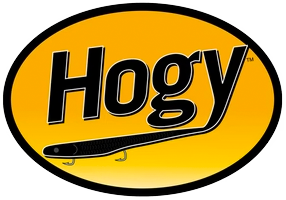
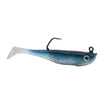
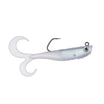
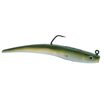
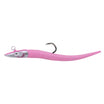
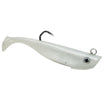

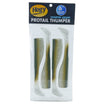
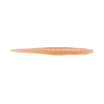
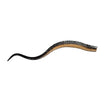
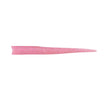
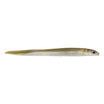
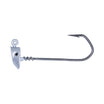
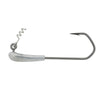
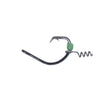





Leave a comment
All comments are moderated before being published.
This site is protected by reCAPTCHA and the Google Privacy Policy and Terms of Service apply.